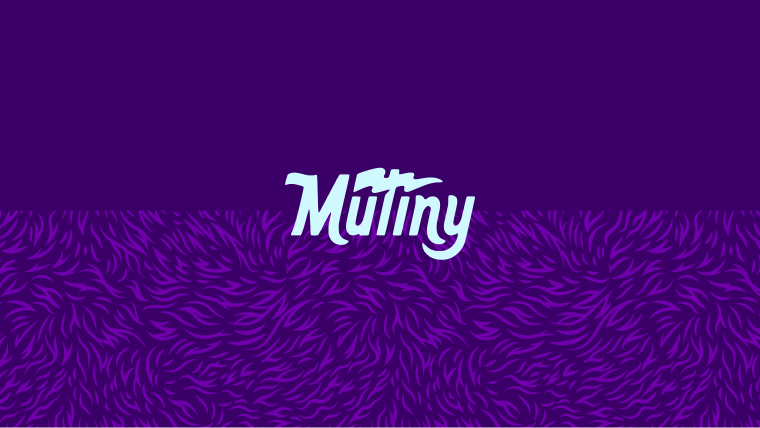- Product
- Resources
- Customers
- Company
Want to get started?
See why companies like Qualtrics, Snowflake, and Amplitude use Mutiny to hit their pipeline goals.
1:1 ABM personalization made easy
See how ABM teams use Mutiny to engage target accounts at scale.
Deal velocity is especially important when using account-based marketing (ABM) as a GTM motion. It's relatively simple to do 1:1 ABM with a single contact at an account. But rarely will a single person have all the decision-making power to take the deal from discovery to closed-won on their own.
The big ABM unlock is when you're able to deliver 1:1 ABM experiences at scale.
In this post we've compiled three simple yet powerful ABM tactics that you can implement when you only have an hour (or less) to spare.
These tactics are best used in parallel with larger ABM campaigns to greatly improve the deal velocity and build trust with multiple internal stakeholders at your key accounts.
Tactic 1: Personalized Event Invite Modal
Through our own experience, we’ve seen that hosting live events is a powerful tactic that keeps customers engaged and provides real value to prospects. Add dimension and scalability to this tactic by creating a personalized invitation to an event that’s about your target account’s vertical or use case.
The component should drive to a landing page for a recurring event like a weekly webinar, or to a major tent pole event.
You can do this tactic in only about 15 minutes:
Choose a data source to identify your target accounts. Can be 1st party data like Salesforce or Hubspot, or 3rd party data like 6sense or Clearbit. The more data sources you have integrated, the more creative and specific you can be with your ABM messaging.
Define your messaging. With your key accounts now identified, be as specific as possible with your message promoting your event. Include the name of the account, why the topic is relevant to them, and what pain point the event will help them with.
Create a personalized event invite experience. Modals are a simple way to get relevant information in front of your accounts. Experiment with side-pops, banners, or pop-ups to see which converts best.
Tactic 2: 1:1 ‘Switch to Us’ Page
This is a great tactic for when a target account who is currently using a competitor lands on your website. Use first-party data to identify those target accounts that are using competitors and create an inbound page detailing why they should switch.
This tactic takes about an 30 minutes to write copy for the page and 15 minutes to setup the personalization:
Segment accounts where competitor is know. Create a segment of your target accounts where the competitor field in Salesforce is known. This information can be gathered by enriching your target account list to see what tools are part of their technology stack.
Make your case to switch. Use Mutiny’s editor to create a personalized website page that makes your case to those target accounts. This is a great opportunity to call-out specific areas that you know you do better than the competition and that the target account wants.
Layer in objections and FAQs from sales calls. Look back through Gong calls that your sales team has had with contacts at your target accounts to pull out any key insights you can use on this page. Take words from the objection handling portion of the call and turn them into a dedicated section.
Tactic 3: Active Deals Banner
If you’re already in the process of a deal, it’s likely that multiple contacts from your account will reach your site. Having a streamlined, relevant experience can create a great impression and help to accelerate the deal.
This tactic takes about 15 minutes:
Identify other internal stakeholders involved in the deal. Use Salesforce to identify visitors who's company is in an active deal. These visitors may not be in the conversation, but may still have a say in the deal.
Give context on the deal. Create a personalized banner for them that briefly gives context on the status of the deal and tells them who to contact. In the banner, you can easily link to the e-mail of the proper person on your team.
In the example below, inside Mutiny’s experience editor, the user wrote:
‘mailto:rep@mycompany.com’ in the Redirect URL field.
Alternatively, you can include a link to Chili Piper or other calendaring tool to connect directly with the account executive handling the deal.
Use multiple touchpoints to accelerate deal velocity
When engaging with a target account, it's important to remember that although your internal champion knows exactly what your company can help them, most other people at their company have likely never heard of you.
Each of the tactics described above help to bring more contacts into the fold without needing to spend too much time doing 1:1 reach-out.
When designing these personalized experiences, follow these general guidelines:
Help connect the dots: Don't try to hard sell in your messaging (that's what sales calls are for). Instead, create messaging that intrigues your prospects into learning more.
Be approachable and accessible: The account is already active, so make it dead-simple for them to be able to speak with their account executive. Turn demo requests into direct lines of communication to speed up the deal.
Be helpful: Suggest the most relevant content, invite them to roundtables and events, offer up examples to help gain context.
Stella Li
Share this Post
Learn to drive more pipeline
Curated resources to accelerate your career
Learn how top B2B marketers are driving pipeline and revenue.






